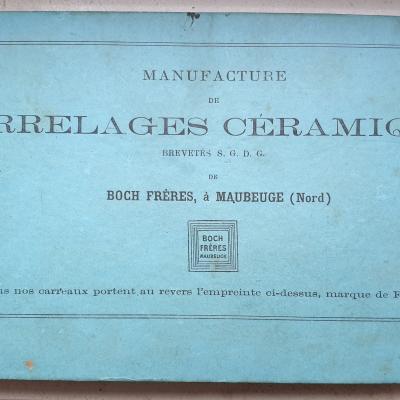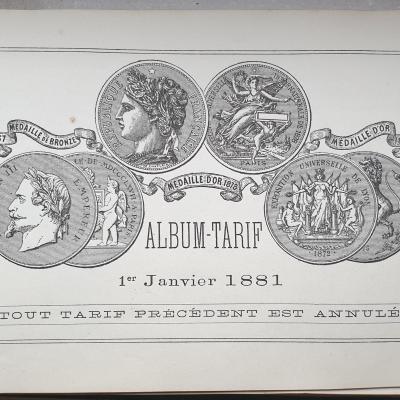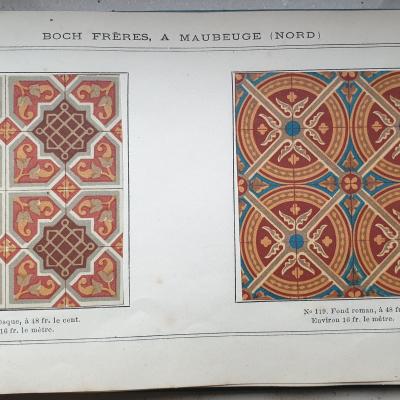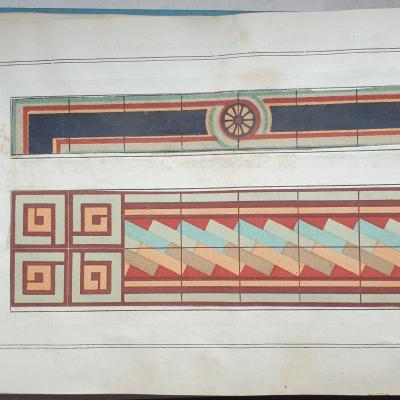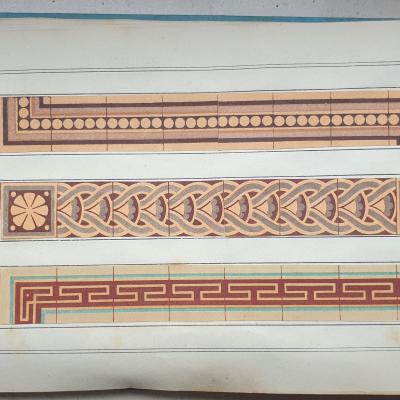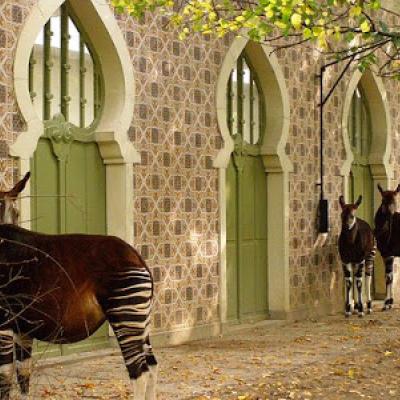To 19m2 / 207 sq ft. - A heritage Boch Freres ceramic - c.1860-1881
A Rare Architectural Artefact: Handmade Boch Frères Ceramic Floor c.1860-1881
This exceptional ceramic floor, totalling between 17m² and 19.2m² (up to 207 sq ft), is a rare and fully restored example of 19th-century industrial artistry from the renowned Ceramiques Carrelages de Boch Frères Maubeuge usine. Produced c.1860-1881, each tile—measuring 17.2cm (6.8 inches) square and weighing over 1.4 kg (3lbs)—is a testament to the precision and craftsmanship of the pre-industrial ceramic tradition and proudly bear the authentic BOCH FRÈRES MAUBEUGE stamp on the reverse of the tiles.
What sets this ensemble apart is not only its impeccable provenance. The principal floor layout covers 17m² / 183 sq ft and an optional ornate border series—originally laid in an annex to the reception room—adds a further 2.1m² / 23 sq ft and over 12 linear metres of decorative framing. This secondary border is a rare surviving example of Boch Frères’ more elaborate designs, echoing the flowing, organic motifs that would later influence Art Nouveau.
The tiles exhibit the hallmarks of 19th-century handmade ceramic production; subtle tonal variations and a quality deep slip. Minor groutable edge nibbles or small chips can be found on a few tiles, all contributing to their charming antique patina. These are not mass-produced imitations but genuine, handmade artefacts, created in an era before mechanised uniformity, when each tile bore the imprint of its maker.
Notably, these same field tiles that appear in the 1881 Boch Frères catalogue, scans of which are included in the photo gallery, can be seen adorning the walls of the fine Moorish-themed Okapi House at Antwerp Zoo, Belgium, built in 1860. This architectural reference anchors the tiles within a broader cultural fascination with exoticism and eclectic design during the late 19th century—a time when decorative ceramics were both functional and aspirational.
In today’s market, where intact antique ceramic floors of this pedigree are vanishingly rare, this offering represents a unique opportunity to acquire a walkable piece of European design history. It is not merely a floor—it is a curated fragment of the Belle Époque, ready to be relaid and re-lived.
This is a floor for which we have more of the identical field tiles available, providing the opportunity to create a larger c.41m2 / 440 sq ft. floor. Click here for more details. We will be happy to assist you in looking at the potential fit and recommend the aesthetic layout of the floor, without obligation, and can produce technical floor plans.
Tile quantities by tile type
FIELD tiles - 380 - 11.25m2 / 121sq ft.
LARGE BORDER tiles - 145 plus border 4 corners - 4.4m2 / 47.5 sq ft or 25.6 linear metres / 84 linear ft.
HALF-SIZED BORDER tiles - 92 plus 4 border corners - 1.4m2 / 15.3 sq ft or 16.2 linear metres / 53.1 linear ft.
OPTIONAL LARGE BORDER tiles - 68 plus 3 border corners - 2.1m2 / 22.6 sq ft or 12.2 linear metres / 40 linear ft.
NOTE Antique tiles were most commonly made in single or two tile moulds. Before current computer automation methods their moulds were made by hand and the colour slips mixed by eye. Kiln temperatures could also be variable, as could the firing time. The result is that tiles often display subtle size and thickness variations and there can be tonal variations in colours, owing to the slip mixing and/or firing time. All of this makes these handmade tiles unique and adds to their charm. Some floors display their subtle variations in size and tones, some not, but when photographing we always take a random section of the floor so that it is representative of the whole. A tiler should always dry lay a section of the tiles to familiarise himself with them before starting to fix lay.
CE309



